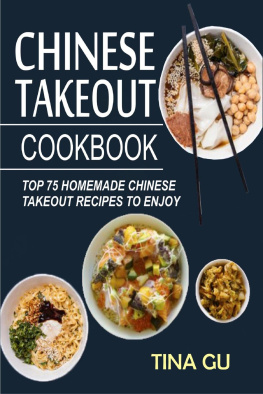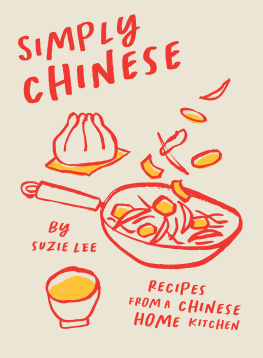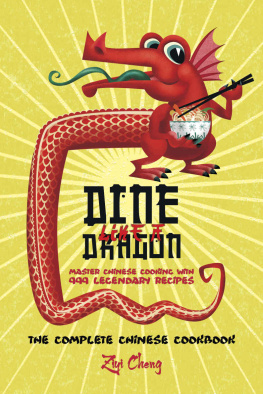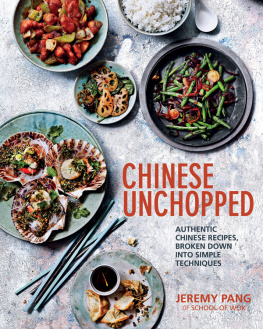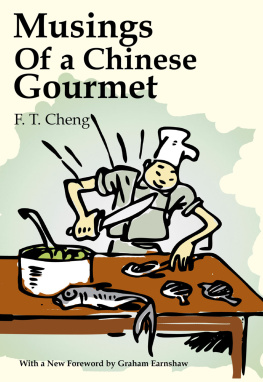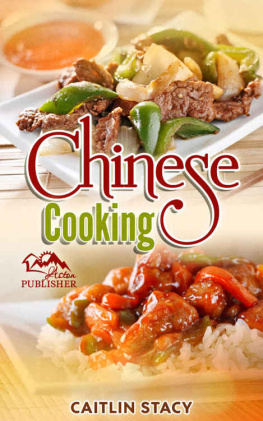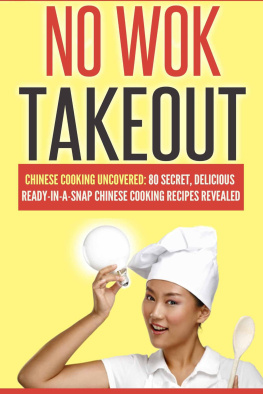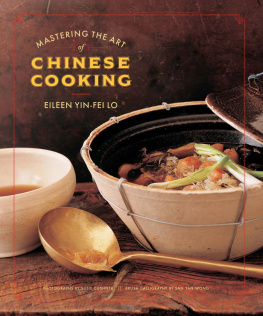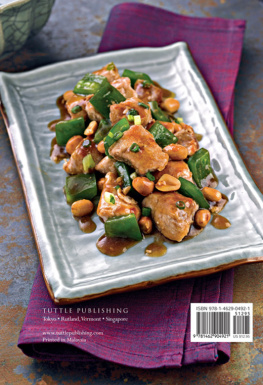Excel Cooking - Excel Chinese Cooking: Get Into the Art of Chinese Cooking
Here you can read online Excel Cooking - Excel Chinese Cooking: Get Into the Art of Chinese Cooking full text of the book (entire story) in english for free. Download pdf and epub, get meaning, cover and reviews about this ebook. year: 2019, publisher: Excel Cooking, genre: Home and family. Description of the work, (preface) as well as reviews are available. Best literature library LitArk.com created for fans of good reading and offers a wide selection of genres:
Romance novel
Science fiction
Adventure
Detective
Science
History
Home and family
Prose
Art
Politics
Computer
Non-fiction
Religion
Business
Children
Humor
Choose a favorite category and find really read worthwhile books. Enjoy immersion in the world of imagination, feel the emotions of the characters or learn something new for yourself, make an fascinating discovery.

- Book:Excel Chinese Cooking: Get Into the Art of Chinese Cooking
- Author:
- Publisher:Excel Cooking
- Genre:
- Year:2019
- Rating:5 / 5
- Favourites:Add to favourites
- Your mark:
- 100
- 1
- 2
- 3
- 4
- 5
Excel Chinese Cooking: Get Into the Art of Chinese Cooking: summary, description and annotation
We offer to read an annotation, description, summary or preface (depends on what the author of the book "Excel Chinese Cooking: Get Into the Art of Chinese Cooking" wrote himself). If you haven't found the necessary information about the book — write in the comments, we will try to find it.
Excel Cooking: author's other books
Who wrote Excel Chinese Cooking: Get Into the Art of Chinese Cooking? Find out the surname, the name of the author of the book and a list of all author's works by series.
Excel Chinese Cooking: Get Into the Art of Chinese Cooking — read online for free the complete book (whole text) full work
Below is the text of the book, divided by pages. System saving the place of the last page read, allows you to conveniently read the book "Excel Chinese Cooking: Get Into the Art of Chinese Cooking" online for free, without having to search again every time where you left off. Put a bookmark, and you can go to the page where you finished reading at any time.
Font size:
Interval:
Bookmark:
Welcome to...
Excel Chinese Cooking
Get into the Art of Chinese Cooking
Excel Cooking
Copyright Excel Cooking, all rights reserved. It is impermissible to reproduce any part of this book without prior consent. All violations will be prosecuted to the fullest extent of the law. While attempts have been made to verify the information contained within this publication, neither the author nor the publisher assumes any responsibility for errors, omissions, interpretation or usage of the subject matter herein. This publication contains the opinions and ideas of its author and is intended for informational purpose only. The author and publisher shall in no event be held liable for any loss or other damages incurred from the usage of this publication.

"What would you like to order?"
I.
II.
III.
IV.
V.
VI.
VII.
VIII.
IX.
X.
XI.
XII.
XIII.
XIV.
XV.
XVI.
XVII.
XVIII.
XIX.
XX.
XXI.
XXII.
XXIII.
XXIV.
XXV.
OPENING
"Yes, we're open! Please come on in."
Greetings, we would like to welcome you to Excel Cooking.
Now this might not be what you expect like most cookbooks out there because (naturally) there is no way we can cover every dish under the sun.
Our approach is not to overwhelm you with choices, but rather give you the finest options available to choose from to get your feet wet. Don't be surprised if they're not the most common food items that you think of since we're going for a more authentic route.
These recipes were specifically chosen for a reason to give you real hands-on experience.
Each cuisine requires different cooking techniques and method, and the goal is for you to build that foundation to the point where you can customize and tweak the selections however you like for more intricate fancy dishes.
More importantly, rather than simply know how to cook, it's about understanding the cultural practice and the handling of the food itself to really excel in this particular area of cooking.
We recommend that you at least attempt all the dishes (if you can).
Enjoy your meal!
STARTERS
I. The Great Taste of China
Who amongst you is familiar with the Chinese way of life?
We can assume very few of you are experts, or you probably wouldnt be reading this right now to discover more about the Chinese culture. And were sure at the top of your list of things to learn about istheir food.
Actually, as much as we all love Chinese food, the Chinese are also very fond of their foods as well. The Chinese people have sort of a personal pride when it comes to their cooking.
For example, if you were to go to any Chinese restaurant and order Chow Mein, and then order the same thing from a second restaurant, the difference between the two dishes can be quite apparent to the right taste buds. Thats not just because one restaurant knows how to make it properly and the other doesnt (although that can happen, too). In any given restaurant, the recipe can differ based off which ingredients that chef wants to present for a specific dish.
While the food is not as much a point of national pride as it is in other Asian cultures, the Chinese still do love to show it off.
As you will soon learn, how or what you add to your own food creations will immerse you further into the culture than simply copying recipes could ever do.
II. The Ingredients Basis
One thing that can trip up any non-Chinese individual while cooking in this traditional style is the ingredients.
Many Americans dont recognize the names of things that go into the common dishes they order at their favorite Chinese restaurant. Even those who are familiar with the ingredients dont necessarily know where to get them, how they are priced, etc. For that reason, we are going to give you a basic run down of essential ingredients you will want to know before you start to cook.
Chinese cooking ingredients can be broken up into the four main areas listed below (with some examples):

*Condiments: Covers all the sauces and other ingredients used to give an extra umph to your flavor palate.
**Spices: In a nutshell, spices are the ground zero that set up the presentation you want to get across in your meal.
***Noodles/ Rice: They are the hearty backbone of most dishes. While the main staple in Chinese cooking is rice, there is more variety when it comes to the noodle. Both grains work side by side with meat to give full nourishment to the eater.
****Pre-Packaged: These items mostly abound in China and are harder to find everywhere else. They are usually shipped out to other countries in packaging of some sort (like with bamboo shoots).
III. The Search for Materials
While it can be fun to shop in new places for good food items, you cant always find a deal in specialized shops. That, and local grocers just dont always have them. Here are three common places to shop that most everyone has access to somewhere in their area.
- Larger Local Chains: Almost every town, no matter how small, will have a local shop that is part of a bigger chain. For example, around the Idaho/Utah area youll run into quite the number of Broulims Fresh Foods. This small chain is spread across several states, but isnt well known everywhere. Often, small chains will have larger selections than just local stores, but will be more central to your towns needs so you dont have to search long and hard.
- Specialized Shops: Its not always easy to find a store in your area that is centered on strictly one type of food. That being said, if you are open to scouring the Internet and doing a little traveling, that search becomes easier. Most towns and cities have at least one shop or area within town that is Asian in nature and will have the things that you need. With a quick Google search (and maybe a tank of gas), you can find everything you need in one fell swoop.
- Chinese Restaurants: Yes, this might sound unconventional, but almost anywhere you go youll find a local Asian eatery. These usually are Chinese restaurants rather than Taiwanese, Japanese, or Korean. Nevertheless, every restaurant needs to get its supply from somewhere. Asking around, and looking things up online or in menus, will give you a good idea of where to shop not just for good materials, but also for cheaper items or items in bulk.
IV. The Tools for Chinese Cooking
While it is possible to use any tools found in your kitchen to get your cooking off to a good start, there are four or five basic tools that can really help you in making Chinese dishes easier:
- Woks: A wok is basically a round-bottom frying pan with a flat gripping handle on one side, and a long reaching handle on the other. While you can stir-fry in any hot pot, the wok is designed to let you concentrate the heat near the bottom of the pan and flip the food easily without a spatula.
- Knifes: While most western knives were created to chop through bone and meaty heartiness, the Chinese were the crafters of the original veggie knives and thin blades. With blades, you want something sized 2 to 3 inches at its thickest spot, and a sharp point on the tip with razor edges.
- Steamers: Chinese steamers come in every shape and size. While some are made strictly for vegetables or rice, most are multi-functional. No matter what you use it for, the steamer is a guaranteed method for preparing food quicker. Plus, its so easy to use that you can literally walk away and prep other food items (or even read a book) while the steamer does its job.
Next pageFont size:
Interval:
Bookmark:
Similar books «Excel Chinese Cooking: Get Into the Art of Chinese Cooking»
Look at similar books to Excel Chinese Cooking: Get Into the Art of Chinese Cooking. We have selected literature similar in name and meaning in the hope of providing readers with more options to find new, interesting, not yet read works.
Discussion, reviews of the book Excel Chinese Cooking: Get Into the Art of Chinese Cooking and just readers' own opinions. Leave your comments, write what you think about the work, its meaning or the main characters. Specify what exactly you liked and what you didn't like, and why you think so.


